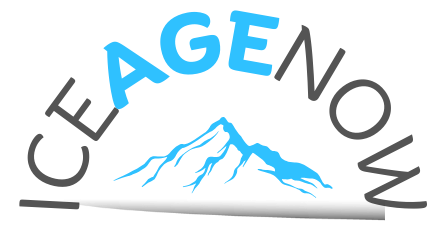Step into the realm of meteorological complexities as we unravel the intricate relationship between climate change and colder weather. Discover how shifting atmospheric patterns, melting Arctic ice, and disrupted ocean currents contribute to frigid conditions in this enlightening exploration. Explore the nuances of polar vortex intensification, jet stream disturbances, and feedback loops amplifying cold events. Delve into the world of regional climate variability and altered weather extremes in this insightful journey.
Changes in Atmospheric Circulation Patterns
You’ll notice that changes in atmospheric circulation patterns can lead to colder weather in certain regions. Temperature gradients play a crucial role in shaping these shifts. When temperature differences between latitudes alter, pressure systems are affected, influencing wind patterns and atmospheric dynamics. Climate models help scientists understand how these intricate relationships unfold. For instance, variations in sea surface temperatures can disrupt the typical jet stream configuration, causing it to meander and bring frigid air further south than usual. This change in wind patterns can result in cold spells impacting areas unaccustomed to such conditions. By studying atmospheric dynamics closely through climate models, researchers gain insights into how climate change contributes to unexpected bouts of colder weather.
Impact of Melting Arctic Ice on Weather Patterns
When the Arctic ice melts, it can alter weather patterns in unexpected ways. Arctic amplification, the phenomenon where the Arctic warms faster than the rest of the globe, plays a crucial role in this process. As ice loss continues, it impacts atmospheric circulation, leading to weather anomalies worldwide. One significant effect is the potential increase in extreme cold outbreaks in regions far from the Arctic. This seemingly contradictory outcome occurs because disruptions in atmospheric patterns can cause cold air masses to shift southward more frequently and persist longer than usual. Therefore, as Arctic ice continues to diminish due to climate change, be prepared for possible fluctuations that may bring about colder temperatures and unusual weather events in various parts of the world.
Polar Vortex Intensification
As the polar vortex intensifies, it brings about stronger and more persistent cold air outbreaks in various regions. This extreme cold is a result of polar amplification, where the Arctic warms at a faster rate than other areas due to climate change. Stratospheric warming plays a role in disrupting the polar vortex, leading to Arctic outbreaks that extend further south and last longer. Atmospheric blocking patterns contribute to these frigid conditions by trapping cold air in specific areas for extended periods. These complex interactions highlight how climate change can paradoxically lead to colder weather events in certain regions even as global temperatures rise. Embracing sustainable practices remains crucial in addressing these interconnected challenges.
| Factors | Impact |
|---|---|
| Polar Amplification | Intensifies cold outbreaks |
| Stratospheric Warming | Disrupts the polar vortex |
| Arctic Outbreaks | Extend further south and last longer |
| Atmospheric Blocking | Traps cold air in specific regions for long periods |
Jet Stream Disruption
Jet stream disruption can lead to significant shifts in weather patterns and affect global atmospheric circulation. Changes in temperature gradients caused by climate change can weaken the jet stream, making it wavier and slower. This altered flow of air can create conditions for extreme weather events like prolonged heatwaves or cold spells. The interaction between the jet stream and atmospheric waves plays a crucial role in weather forecasting, as disruptions can lead to erratic patterns that are challenging to predict accurately. Climate models incorporate these dynamics to understand how stratospheric warming influences the jet stream, providing insights into potential future scenarios and their impact on regional climates worldwide. Understanding jet stream disruption is essential for preparing for the increasing variability in weather patterns brought about by climate change.
Influence on Ocean Currents
Ocean currents’ influence on marine life can be significant, affecting migration patterns and nutrient distribution. The circulation dynamics driven by temperature gradients play a crucial role in shaping these currents. Ocean heat plays a key part in fueling these movements, impacting climate feedback loops globally. Temperature variances not only drive the currents but also influence atmospheric processes, creating complex interactions between oceans and the atmosphere. These intricate relationships are essential for maintaining the delicate balance of marine ecosystems. Changes in ocean currents due to climate change can disrupt this balance, leading to shifts in species distribution and altering nutrient availability, ultimately impacting the health of marine life worldwide. Understanding these interconnected systems is vital for predicting and mitigating the effects of ongoing environmental changes.
Altered Weather Extremes
After learning about the impact on ocean currents, let’s delve into how climate change causes altered weather extremes. You may experience more extreme cold events, with arctic blasts penetrating regions unaccustomed to such frosty conditions. These fluctuations in temperature can lead to unpredictable winter storms that are stronger and longer-lasting. Below is a table showing the effects of climate change on weather extremes:
| Weather Extremes | Impact | Example |
|---|---|---|
| Extreme Cold | Longer duration of cold | Prolonged sub-zero temperatures |
| Temperature Fluctuations | Unpredictable weather patterns | Rapid shifts between warm and cold |
| Winter Storms | Intensified storms | Increased snowfall amounts |
| Arctic Blasts | Sudden extreme cold | Record-breaking low temperatures |
These changes highlight how climate change is contributing to more frequent and severe winter conditions.
Feedback Loops Amplifying Cold Events
Explore how feedback loops can amplify the intensity of cold events, leading to even more extreme winter conditions. Arctic amplification, where the Arctic warms faster than other regions, reduces snow cover and sea ice extent. With less white snow and ice to reflect sunlight (snow albedo), more heat is absorbed, further warming the region. This causes disruptions in the jet stream, triggering cold air outbreaks into lower latitudes and intensifying winter storm severity. The reduced sea ice also affects ocean currents, influencing atmospheric circulation patterns that can prolong cold spells. These interconnected processes create a vicious cycle where each element reinforces the others, contributing to a cascade of extreme cold weather events.
Regional Climate Variability
Regional climate variability can lead to significant differences in temperature and precipitation patterns across various geographic areas. Temperature fluctuations can vary drastically from one region to another, impacting ecosystems and human activities. Precipitation patterns also exhibit diversity due to climate shifts, affecting agriculture and water resources differently in each area. Extreme events like heatwaves or heavy rainfall are more likely in certain regions, causing distinct challenges for local populations. These climate variations result in unique regional impacts on flora, fauna, and communities, highlighting the importance of understanding and adapting to the specific conditions of each area. By acknowledging the complexities of regional climate variability, we can better prepare for its consequences and foster resilience in diverse environments.


